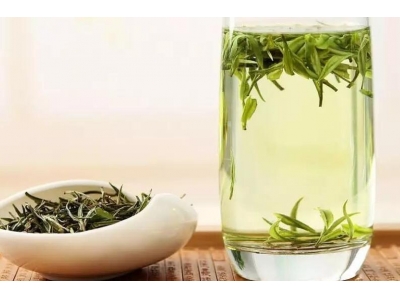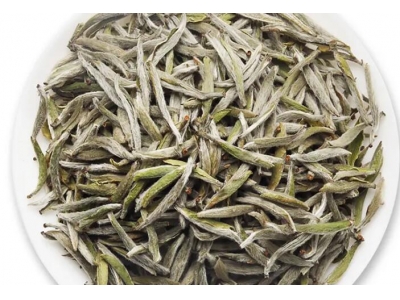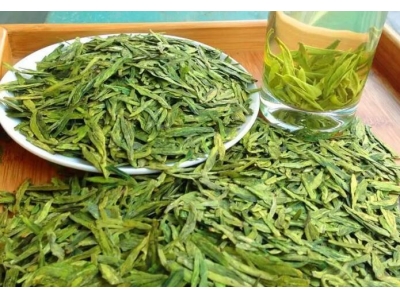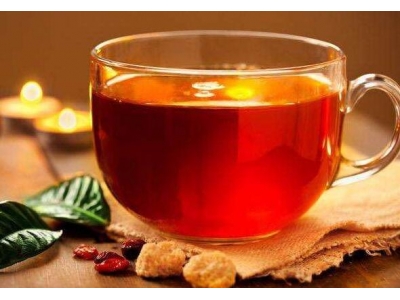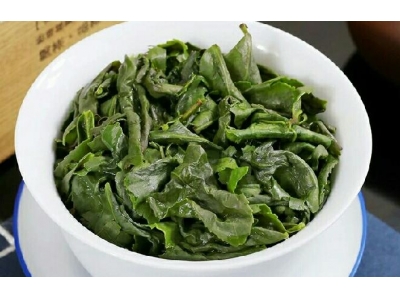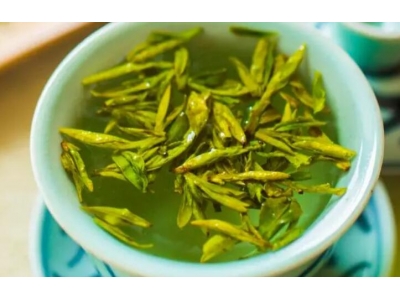China tea与Chinese tea有什么区别?
一、China tea与Chinese tea有什么区别?
前者不符合语法因为china是名词,Chinese是形容词,后接名词tea,所以后者正确,意思是:中国的茶或中国茶
二、chinese tea是红茶还是绿茶?
chinese tea泛指中国茶,而中国是世界上的茶叶生产与饮用大国,有着丰富的茶叶品种与齐全的种类,目前主要有黄茶、绿茶、白茶、乌龙茶、红茶、黑茶六大类以及再加工茶,而这些茶类之下,仍有上千种茶叶品种,且茶叶品质优良,因此声名远播,而中国茶便是一种茶与文化的代名词,因此称之为chinese tea。
三、安吉白茶珍稀白茶的价格大概多少呢?
你这个估计是礼盒上的名称吧?问个名称就可以知道价,卖茶的就别混了。
不管你是西湖龙井,还是碧螺春,还是大红袍,还是金骏眉,可以卖你50,也可以卖你500000, 很多人说,这就是小x茶存在的意义,就是让收礼人知道价格。
四、Introduction to Chinese Tea Culture
Overview of Chinese Tea Culture
Chinese tea culture, with a history of thousands of years, is an integral part of traditional Chinese culture. It is not only about drinking tea, but also embodies profound social and spiritual connotations.
The Origins of Chinese Tea Culture
The history of Chinese tea culture can be traced back to ancient times. Legend has it that the Chinese Emperor Shennong discovered tea by accident around 2737 BC. Since then, tea has been deeply rooted in Chinese daily life and has become an indispensable part of traditional Chinese culture.
The Diversity of Chinese Tea
Chinese tea can be categorized into several types, including green tea, black tea, white tea, oolong tea, and dark tea. Each type has its own unique characteristics in terms of taste, aroma, and brewing methods.
The Art of Chinese Tea Ceremony
The Chinese tea ceremony, also known as "the way of tea" or "茶道 (chá dào)" in Chinese, is a traditional culture that focuses on the preparation, serving, and drinking of tea. It emphasizes etiquette, tranquility, and respect for the tea, which reflects the essence of Chinese traditional culture.
The Significance of Chinese Tea Culture
Chinese tea culture has a profound influence on various aspects of Chinese society, including philosophy, medicine, art, and daily etiquette. It has also been widely appreciated and inherited by people around the world, contributing to the diversity of global tea culture.
In conclusion, Chinese tea culture is an embodiment of Chinese traditional philosophy and an important symbol of Chinese social etiquette. Its profound influence on Chinese society and its unique charm have made it an indispensable part of Chinese civilization.
Thank you for reading this introduction to Chinese tea culture. Understanding the essence of Chinese tea culture can provide insights into the profound traditions and values of Chinese society.
五、The Characteristics of Liu Bao Tea: A Unique Chinese Tea
Introduction to Liu Bao Tea
Liu Bao tea, also known as "六堡茶" in Chinese, is a type of dark tea that originated in Guangxi Province, China. It is famous for its unique characteristics and rich history.
History and Origins
Liu Bao tea has a history of over 1,000 years, making it one of the oldest teas in China. It is produced in the Wuzhou and Liuzhou areas of Guangxi Province, where the climate and environment are ideal for growing tea plants.
Characteristics of Liu Bao Tea
Liu Bao tea is distinguished by its dark, large, and tightly compressed leaves. When brewed, it produces a deep red liquor with a smooth and mellow flavor. The tea has a unique earthy aroma and a sweet aftertaste, which sets it apart from other Chinese teas.
Health Benefits
Like other types of tea, Liu Bao tea offers a range of health benefits. It is believed to aid in digestion, reduce cholesterol levels, and provide a source of antioxidants. Regular consumption of Liu Bao tea is also associated with improved heart health and overall well-being.
Cultural Significance
In Chinese culture, Liu Bao tea has a special place. It is often enjoyed during important family gatherings and is considered a symbol of hospitality and warmth. The tea ceremonies involving Liu Bao tea reflect the deep-rooted traditions and customs of the Chinese people.
Conclusion
In conclusion, Liu Bao tea stands out for its unique characteristics, long history, and cultural significance. Its distinct flavor, health benefits, and cultural importance make it a beloved part of the Chinese tea tradition.
Thank you for reading about the characteristics of Liu Bao tea! We hope this article has provided you with a better understanding of this unique Chinese tea and its significance. Enjoy a cup of Liu Bao tea and experience its rich flavors and cultural heritage.
六、Mastering the Art of Tea: Showcasing the Elegance of Chinese Tea Culture
Introduction to the Art of Tea
Tea, as an indispensable part of Chinese culture, has a history of thousands of years. The art of tea, also known as "茶艺" (cháyì) in Chinese, encompasses not only the preparation and serving of tea, but also the appreciation of tea and the rich culture and traditions surrounding it. As the world becomes increasingly fascinated by the charm of Chinese tea culture, showcasing the art of tea in English has become a widely recognized and important practice.
The Significance of Showcasing Tea Art in English
Showcasing the art of tea in English serves as a bridge for cultural communication and exchange. It allows people from different cultural backgrounds to gain a deeper understanding of the profound connotations of Chinese tea culture. Moreover, it contributes to the promotion and inheritance of traditional Chinese craftsmanship, enhancing cultural confidence and soft power on the global stage.
Methods for Showcasing Tea Art in English
1. English Language Training for Tea Art Professionals: It is essential for tea art professionals to possess a certain level of English proficiency in order to effectively communicate the essence of Chinese tea culture to international audiences. Providing English language training programs specifically tailored to tea art can greatly enhance the ability of practitioners to showcase the art of tea in English.
2. English-Friendly Tea Art Performances and Demonstrations: Designing tea art performances and demonstrations that cater to English-speaking audiences can effectively convey the elegance and grace of Chinese tea culture. This includes providing bilingual explanations and interpretations to facilitate a deeper understanding of the rituals and significance behind the art of tea.
3. English Promotional Materials and Online Platforms: Creating promotional materials such as brochures, videos, and websites in English can extensively reach global audiences. Through these materials, the beauty of the art of tea can be vividly presented, attracting more people to explore and experience the charm of Chinese tea culture.
Benefits of Showcasing Tea Art in English
Showcasing the art of tea in English not only promotes cultural exchange and mutual learning, but also stimulates the development of related industries. From tourism to the hospitality sector, the influence of the art of tea extends to various aspects of the economy, enhancing cultural tourism and contributing to the sustainable development of the tea industry.
Conclusion
In a world that increasingly values cultural diversity and mutual understanding, showcasing the art of tea in English plays a vital role in promoting the inheritance and innovation of Chinese tea culture. By breaking language barriers and sharing the essence of tea art with the world, we contribute to the enrichment of global cultural heritage and the building of a community with a shared future for mankind.
Thank you for taking the time to read this article, and it is hoped that through this piece, readers can gain a deeper understanding of the importance and impact of showcasing the art of tea in English.
七、珍稀白茶和安吉白茶区别?
珍稀白茶和安吉白茶是两种不同的茶,它们有以下区别:
- 种类:珍稀白茶一般指白茶,是中国六大茶类之一;安吉白茶则属于绿茶类。
- 产地:白茶的产地范围较广,主要产区在福建福鼎、政和、蕉城天山、松溪、建阳、云南景谷等地;安吉白茶的主产区是浙江省湖州市安吉县。
- 制作工艺:白茶的制作工艺相对简单,一般包括萎凋和干燥两个步骤;安吉白茶则经过杀青、揉捻和干燥等工艺。
- 外观:白茶的外观多为白毫显露、芽叶完整;安吉白茶的叶片呈绿色,叶脉浅绿色,叶张玉白镶绿。
- 口感:白茶的口感清淡、甘甜,有花香或果香;安吉白茶的口感鲜爽、清甜,具有嫩香。
- 营养价值:白茶含有丰富的茶多酚、氨基酸、维生素等营养成分;安吉白茶也含有一定的营养成分,但具体含量可能因品种和产地而有所差异。
需要注意的是,白茶的种类繁多,不同产地和品种的白茶在外观、口感和营养价值上可能会有所不同。此外,茶叶的品质和风味也受到种植环境、采摘时间、加工工艺等因素的影响。
无论是珍稀白茶还是安吉白茶,它们都有各自的特点和独特之处。选择茶叶时,可以根据个人口味和喜好来决定。同时,品尝茶叶时,也可以注重观察外观、闻香、品味等方面,以充分领略不同茶叶的魅力。如果你对某一种茶特别感兴趣,可以进一步了解其产地、品牌和品鉴方法,这样可以更好地欣赏和享受茶叶带来的美妙体验。
八、Invitation to Chinese Tea Culture Exhibition
Introduction
Dear [Recipient's Name],
We are delighted to invite you to the Chinese Tea Culture Exhibition, which will be held in [Location] from [Date] to [Date]. This exhibition aims to showcase the rich history and exquisite art of Chinese tea culture, providing visitors with a unique opportunity to experience the essence of traditional Chinese tea ceremonies and appreciate the diversity of Chinese tea culture.
Exhibition Highlights
- Exquisite Tea Sets: Explore a collection of delicate and elegant Chinese tea sets, each with its own unique craftsmanship and cultural significance.
- Interactive Tea Ceremonies: Participate in interactive demonstrations of traditional Chinese tea ceremonies, where you can learn the art of brewing, serving, and enjoying tea in the Chinese way.
- Tea Art and Calligraphy Display: Admire the beauty of Chinese tea-themed art and calligraphy, which reflect the harmony and elegance of tea culture.
- Tea Tasting Experience: Indulge your senses in a variety of authentic Chinese teas, from classic green and black teas to fragrant floral and herbal blends.
- Lectures and Workshops: Engage in insightful lectures and workshops conducted by renowned tea masters, providing an in-depth understanding of Chinese tea history and culture.
Event Details
Date: [Date]
Time: [Time]
Venue: [Location]
We sincerely hope that you can join us in celebrating the beauty and tranquility of Chinese tea culture. Your presence at the exhibition will undoubtedly enrich the experience for all attendees.
Please RSVP by [RSVP Date] to confirm your attendance. If you have any further inquiries, feel free to contact us at [Contact Information].
Conclusion
We look forward to welcoming you to the Chinese Tea Culture Exhibition and sharing the profound heritage of Chinese tea culture with you.
Sincerely, [Your Name]
九、chinese tea是可数还是不可数?
tea是不可数的,所以chinese tea 也是不可数的。
十、Exploring the Rich Traditions of Chinese Tea Culture
When it comes to the world of tea, there's no denying that China holds a special place. Its long and illustrious history, cultural significance, and diverse range of tea varieties have captivated the hearts and taste buds of people around the globe. In this article, we will embark on a journey to explore the rich traditions of Chinese tea culture and unravel the secrets behind its enduring popularity.
The Origins of Chinese Tea Culture
Chinese tea culture has a history that spans thousands of years, with its roots tracing back to ancient legends and mythical tales. According to one popular legend, the discovery of tea dates back to the reign of Emperor Shen Nong, who is revered as the "Divine Farmer" in Chinese mythology. As the story goes, while boiling water in the shade of a wild tea tree, some leaves drifted into the pot, resulting in the world's first cup of tea. This serendipitous event marked the beginning of China's enduring love affair with tea.
The Art of Chinese Tea Preparation
Central to Chinese tea culture is the art of tea preparation, which is steeped in tradition and ritual. The traditional Chinese tea ceremony, with its precise movements and attention to detail, embodies the harmony between nature, human, and spirit. Whether it's the graceful choreography of a Gongfu tea ceremony or the tranquil elegance of a traditional Chaoshan tea serving, each ceremony reflects the unique characteristics of the tea, the region, and the cultural heritage it represents.
The Diversity of Chinese Tea
China is home to a dazzling array of tea varieties, each with its own distinct flavors, aromas, and health benefits. From the delicate fragrance of Green tea to the robust and earthy notes of Pu-erh tea, the diversity of Chinese tea never ceases to amaze. Whether it's the refined Oolong tea or the floral-scented Jasmine tea, there's a tea for every palate and occasion.
The Cultural Significance of Chinese Tea
Chinese tea culture extends far beyond the simple act of drinking tea; it is deeply intertwined with philosophy, religion, and social customs. Tea has been a source of inspiration for poets, scholars, and artists, who have extolled its virtues in literature, paintings, and calligraphy. The principles of harmony, respect, purity, and tranquility are embodied in the essence of Chinese tea culture, enriching the spiritual and social dimensions of life.
Chinese Tea in the Modern World
Though steeped in tradition, Chinese tea culture continues to evolve and thrive in the modern world. From bustling teahouses in urban metropolises to serene tea plantations in the countryside, the allure of Chinese tea remains as strong as ever. Moreover, as the global appreciation for tea grows, Chinese tea has found its way onto the international stage, with people from different cultures embracing its flavors and rituals.
In conclusion, the traditions, rituals, and heritage of Chinese tea culture continue to leave an indelible mark on the world, captivating tea enthusiasts and cultural aficionados alike. Through the exploration of its origins, art, diversity, significance, and modern influences, we gain a deeper appreciation for the profound influence of Chinese tea culture on the fabric of our global society.
Thank you for taking the time to delve into the world of Chinese tea culture with us. We hope this article has provided a greater understanding of the cultural and historical significance of Chinese tea, as well as an appreciation for the diverse and enchanting world of Chinese tea varieties. Cheers to the ancient traditions and timeless pleasures that Chinese tea culture brings to our lives!

